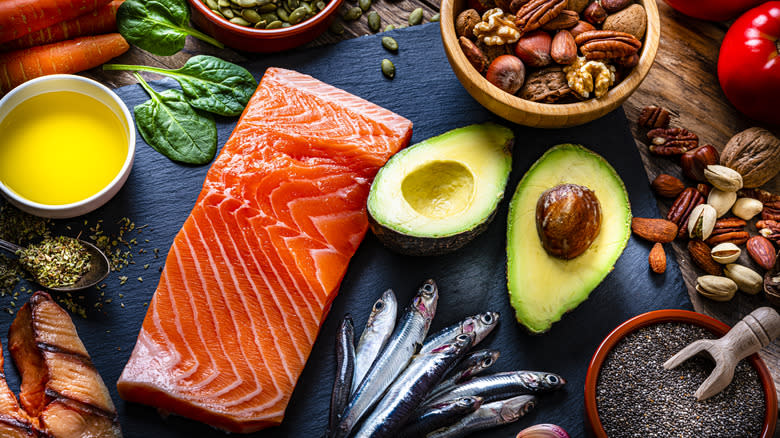According to the CDC, an estimated 119.9 million people in the U.S. are living with high blood pressure. If you fall into that half of the population, chances are a trusted medical professional has suggested ways for you to decrease your blood pressure. While exercising and reducing stress are beneficial, your doctor has probably also mentioned the Mediterranean diet or DASH diet.
Since hypertension is a prevalent health issue in the U.S., it’s no wonder that the DASH diet — short for Dietary Approaches to Stop Hypertension — has sprung up to curb a growing problem. While the DASH diet has been heralded for its ability to decrease blood pressure, medical professionals have also propped up the Mediterranean diet for the same — and more. The DASH diet’s focus tends to be on lowering hypertension while the Mediterranean aims to improve all aspects of health.
With parts of the Mediterranean region falling into a blue zone (a place where the population lives long, healthy lives), the diet has grown in popularity. By replicating the eating patterns of people with exceptional lifespans and tremendous health, followers of the Mediterranean diet hope to age with grace and their cognitive and physical health intact. In early 2023, it was named Best Diet Overall by U.S. News & World Report, followed by the DASH diet at #2. Along with speaking with your primary care physician, understanding the differences between both diets is the best way to determine which one is right for you.
Read more: The 20 Best Olive Oils For Cooking
What Is The Mediterranean Diet?
Although Sardinia, Italy, and Ikaria, Greece are the two original blue zones found within the Mediterranean, the diet consists of food from the entire region. Whether you focus on Lebanese cuisine or Tunisian food, a plate full of fresh produce, whole grains, plenty of nuts, seeds, legumes, and healthy fats is the hallmark of the Mediterranean diet.
Aside from nuts and legumes, protein is obtained primarily from seafood, with lean meat like chicken, turkey, and lamb being a second option. When it comes to carbohydrates, farro, barley, oats, and couscous are staples of the Mediterranean diet. Even with vegetables, non-starchy produce like zucchini, eggplant, bell peppers, and dark leafy greens are favored over potatoes or corn. In general, meals — such as sheet-pan chicken shawarma or Mediterranean orzo — feature a colorful balance of whole grains, lean protein, greens, and more.
Post-dinner treats tend to overlap with produce and healthy fats. Greek yogurt, fruits such as pomegranates, apples, strawberries, figs, and grapes, nuts, and low-fat, unprocessed cheeses like feta or ricotta are eaten instead of sugary confections. Adults also enjoy the occasional glass of wine in moderation. And meals are cooked with olive oil and herbs rather than butter and salt.
What Is The DASH Diet?
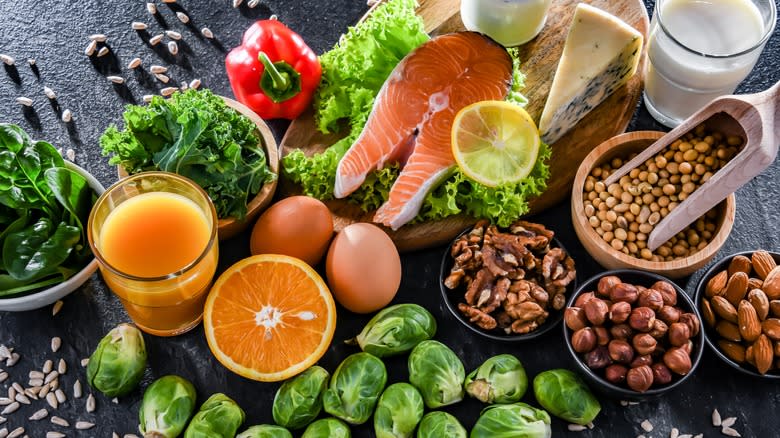
As the name suggests, Dietary Approaches to Stop Hypertension centers around consuming foods that lower high blood pressure. Eating less salt, as well as saturated and trans fats, is a main focus of the diet. Like the Mediterranean diet, the DASH diet involves eating plenty of fruits and veggies, as well as whole grains, nuts and seeds, and legumes.
With dairy and animal-derived protein, opt for the leanest options available. Seafood and white meat are preferred to pork and beef while low-fat cheese, milk, and yogurt should be eaten. Limiting oil is recommended under the DASH diet — and that includes how you prepare your meals. While dressing salad in a bit of avocado oil or sautéing veggies in olive oil is okay, the diet prohibits deep-fried food. Instead, grill, bake, or steam meat and fish.
Although the DASH diet is not vegetarian, it encourages the consumption of plant-based protein, making Moroccan chickpea salad or zucchini crab cakes the perfect meals for no-meat days. Processed sweets, soda, and energy drinks should be replaced with fruits, healthy baked goods, unsweetened tea, and low-sodium vegetable juice.
Follow A Calorie Deficit With The DASH Diet
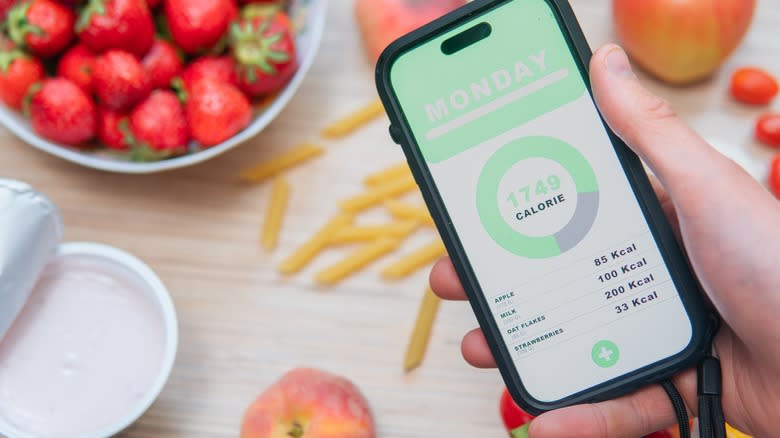
While the Mediterranean diet encourages an overall balance within your meals, the DASH Eating Plan recommends eating within a calorie deficit. The National Heart, Lung, and Blood Institute has proposed calorie deficits, from 1,200 to 3,000 calories, based on your age, gender, and lifestyle. From there, you can deduce how many servings of each food group you should be eating per day.
The regimented diet is designed for followers to see results in their health, whether that be with weight loss or lowering the risk of type 2 diabetes, per the NIH. The suggested servings follow a similar hierarchy to the food pyramid. Grains are the most important, with veggies and fruits sharing second place, followed by an equal helping of nuts, seeds, legumes, poultry, and fish.
While choosing fruits over sweets is preferred, the DASH diet caps it at three per week. All this, along with regular exercise, is designed to lower hypertension and lead to a healthier heart.
Eat Seasonally With The Mediterranean Diet
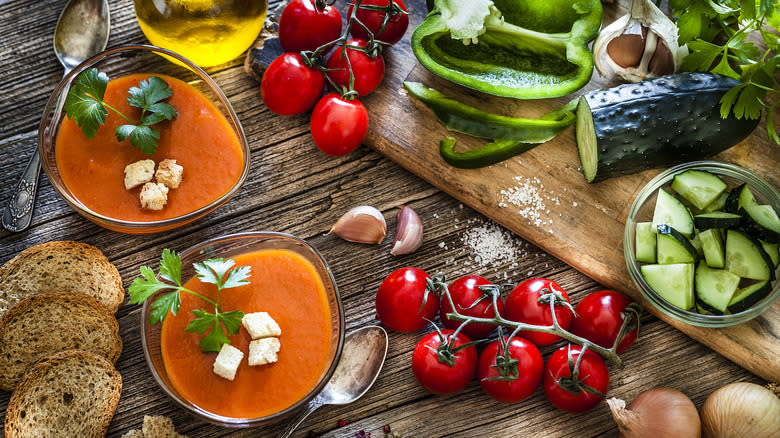
On the surface, the Mediterranean diet and DASH diet look quite similar; they both focus on lean protein, whole grains, and less saturated and trans fat. However, the former was adapted from the habits of Mediterranean people, with one of those habits being eating seasonally. There’s an emphasis on fresh food within Mediterranean cuisine. Even if you don’t have access to salmon or tuna that was just caught this afternoon or freshly harvested figs, you can use local produce to make meals within the diet.
While a mint and melon fruit salad may follow your grilled lamb kabobs during the summer, a Tuscan kale and cranberry salad could accompany pan-seared salmon in the colder months. Adapting actual Mediterranean recipes into your diet is a great way to explore the culture through food. However, freshness and accessibility are also important to stay true to the diet.
Look for seasonal food guides and peruse your local farmers’ market to find produce that’s in-season and grown close by. Local, seasonal produce not only tastes better but has more nutrients, making it essential to the Mediterranean diet.
The DASH Diet Wants You To Reduce Your Salt Intake

On top of the structured calorie deficit, the DASH diet involves limiting the amount of salt you eat to 2,300 mg per day. While that may sound easy to do, the number equates to one teaspoon. In addition to not cooking with as much salt, DASH dieters must find alternatives to pre-packaged food, which is laden with salt.
The American Heart Association reports that excess salt can increase blood flow through the heart’s vessels while simultaneously shrinking the vessels. Both actions can worsen hypertension, meaning those with the medical condition must be wary of how much of the mineral they consume.
Even when watching the amount of salt added to your food, following the DASH diet requires you to be wary of all the sneaky ways sodium can appear on your plate. Since red meat tends to be high in the mineral, eating it excessively is discouraged. Instead, a small amount of lean protein like poultry, seafood, or plant-based alternatives is said to be more beneficial. Swap out the steak dinner for some herb-roasted chicken or vegetarian tempeh cheesesteak.
The Nutritional Values Of Each Diet
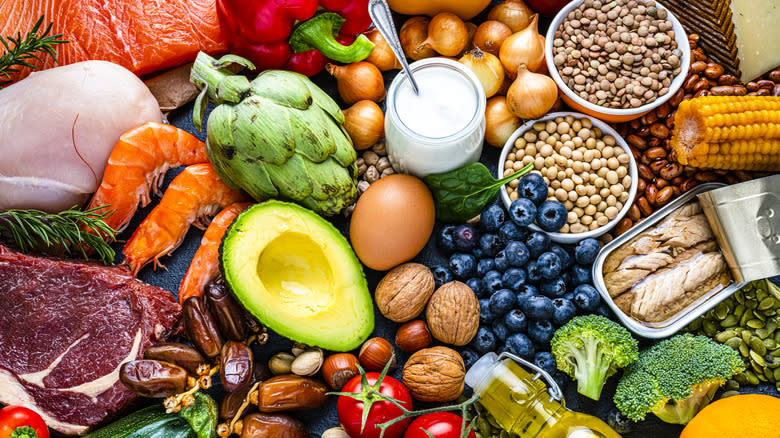
Due to its emphasis on whole grains, the DASH diet tends to be rich in fiber, which helps to reduce blood pressure, according to Healthline. The increase in fiber can also be attributed to consuming fiber-rich vegetables like broccoli, cabbage, and cauliflower. Additionally, these veggies are high in potassium and calcium, minerals that are integral to the DASH diet.
Low-fat or fat-free dairy also operates as a major source of calcium. The diet recommends consuming anywhere from two to three servings of dairy products per day. That can be anything from a Greek yogurt parfait to a sprinkling of part-skim mozzarella on your zucchini lasagna roll-ups. While calcium and other minerals are a large part of the DASH diet, protein is seemingly of lesser importance. Three to four servings or less of meat, poultry, and fish per week is the recommended amount, with the same serving size for nuts, seeds, and legumes.
Meanwhile, seafood is often eaten in the Mediterranean diet. However, this could also be due to the emphasis on healthy fats. Salmon, tuna, and mackerel, staples of the diet, are all high in omega-3. The Mediterranean diet proposes obtaining healthy fats via one to four servings of extra virgin olive oil per day, says Cleveland Clinic. Seafood, as well as other Mediterranean staples like chickpeas, lamb, tomatoes, figs, and apricots, also serve as a means for getting iron.
Read the original article on Tasting Table.
Credit: Source link



